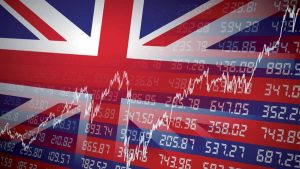As the crisis over Ukraine escalates, major stock-market indexes are retesting their lowest levels of the year, often after losses of more than 10%.
However, one area that has been a haven of sorts has been hard assets, including metals, fossil fuels or even agricultural goods. That’s in part because physical goods are benefiting from general inflationary pressures, but also because some investors are looking to hide out in “hard” assets right now that aren’t at risk of volatility when compared with small-cap growth stocks or cryptocurrencies.
If you’re worried the weak environment for stocks might continue in 2022, then consider looking beyond the typical large-cap stocks in the S&P 500
SPX,
and focusing instead on these five hard-asset investments.
Commodities without the K-1
One of the most popular commodity ETFs out there, as measured by both volume and assets under management, is the Invesco Optimum Yield Diversified Commodity Strategy No K-1 ETF
PDBC,
And there’s good reason for that, as this commodity ETF cuts out a lot of the complexity involved with gaining exposure to this asset class.
To begin with, this ETF offers exposure to a diverse group of the world’s most heavily traded commodities. That includes aluminum, crude oil, soybeans and natural gas. Also, the “No K-1” in the name of this offering means that you won’t get the sometimes burdensome K-1 tax form issued by other commodity-related funds that have been structured as limited partnership ETFs and regulated as “commodity pools.” Not only do the taxes often run higher in these partnerships that demand K-1s, the fees often are higher, too. Consider a different Invesco fund, the Invesco DB Agriculture Fund
DBA,
that is benchmarked only to agricultural commodities like corn and soy. It charges 0.93% in annual fees compared with PDBC’s net expense ratio of just 0.59% — and mails you the complex K-1 form on top of that.
Obviously, you shouldn’t make investing decisions solely based on a tax form. But lower fees plus a diversified portfolio of commodities across metals, “soft” agricultural products and fossil fuels make PDBC the simplest place to start if you want exposure to this strategy. And with gains of 13% year-to-date through Tuesday while other assets remain volatile, this $6 billion ETF is certainly worth a closer look right now.
A ‘dynamic roll’ commodity ETF
Another diversified commodity ETF worth considering if you’re worried about inflation or looking for an alternative to stocks is the iShares GSCI Commodity Dynamic Roll Strategy ETF
COMT,
It’s slightly smaller, with $3 billion in assets, and like PDBC, offers simpler tax filing by avoiding a K-1, as well as a similar makeup of commodities, including energy, metals and agriculture products.
What sets this fund apart, however, is its “dynamic roll” strategy that looks to minimize some of the costs that novice commodity investors can run into in futures markets. Most commodity funds don’t own an actual stockpile of metal or fossil fuels, but instead invest in financial products such as futures contracts tied to those commodities. As those futures approach expiration, the positions must be “rolled” forward by a fund manager who closes out positions in existing contracts and then buys new contracts.
The commodity ETFs that roll on fixed, automatic schedules sometimes get punished for their timing, however, as they sell regardless of how bad the market may be and purchase longer-term contracts regardless of how expensive they are. In contrast, this ETF seeks out the maximum profit opportunity or minimum loss when it rolls.
The proof of how this dynamic strategy can serve you better is in the slight outperformance over PDBC—a nearly 15% gain year-to-date vs. that 13% gain.
The more active approach won’t always result in better returns, but is indeed paying off right now.
Crude oil
Run by boutique commodity shop USCF investments, the United States Oil Fund
USO,
has nearly $3 billion in assets under management. This fund invests primarily in West Texas Intermediate crude oil futures, with 70% of assets benchmarked to futures expiring in the next four months. Right now there’s a 20% weighting in oil futures for both April and May, 15% for both June and July, and the rest spread out through December of this year.
To be clear, futures are a derivative instrument of oil and this fund will not give you a 1-to-1 correlation with the day-to-day movement of a barrel of oil. Furthermore, there’s risk when USL rolls those futures forward.
Last but not least, you may recall a big fuss in 2020 because of a change in the fund’s methodology; it used to load up on very near-term futures focused on just two and six weeks into the future and instead shifted to the current outlook. That really burned some smaller investors looking for easy exposure to oil, and many still are upset and skeptical of the fund as a result.
But frankly, unless you want to build your own basket of crude-oil futures, this is perhaps the easiest way to get direct exposure to the forward movement of prices in this key commodity. USO’s official site has beefed up disclosures and documentation after the contentious 2020 changeover, including filing more regular reports with the SEC, so there’s ample material to educate yourself on the fund’s quirks before investing.
And if you’re still a bit leery of OSU, there’s a sister fund, the United States 12 Month Oil Fund
USL,
that is less volatile thanks to an approach that involves a full year of crude-oil futures. But keep in mind it is less liquid, with only about $150 million in assets, and naturally won’t give you as much upside on near-term increases.
Gold
Gold is a popular safe-haven asset in times of trouble. That’s largely true, given gold’s roughly 0.25 correlation to the S&P 500. Gold is also a popular inflation hedge, as it is a physical asset but uniquely positioned for investing potential instead of being primarily linked to industrial activity like other commodities.
However, it is pretty impractical to stock up on physical bullion or gold coins. The storage alone is a huge pain, between acquiring a large enough safe and insuring your gold against theft, to say nothing of the problems with selling it easily if and when you need actual money.
That’s where the SPDR Gold Minishares Trust
GLDM,
This nearly $5 billion exchange-traded product is tied directly to the price of gold bullion, less the 0.18% in gross annual expenses.
To be clear, this is not the larger SPDR Gold Trust
GLD,
that is the largest physical gold fund on the planet with some $62 billion in assets. This massive fund is almost exactly the same – just plot the charts over each other and see for yourself – but the difference is an expense ratio of 0.40% for GLD that is more than double that of GLDM. That’s because institutional investors tend to prefer GLD; they are willing to pay a premium to avoid liquidity risks. Smaller investors with a longer-term horizon, however, will be better suited for GLDM and its lower expense ratio.
Proof of the low correlation to stocks comes from GLDM’s 4% gain year-to-date in 2022, compared for a decline of almost 10% for the S&P 500, showing gold’s power as both a hedge and a profit center in troubled times like these.
Lithium
Looking beyond the most obvious raw materials and commodity investments, one interesting area to consider is lithium – the key chemical element used in next-generation batteries used to power high-tech devices including electric vehicles.
Thanks primarily to concerns over climate change, an electric vehicle revolution has resulted in more than 2 million plug-in cars and trucks on U.S. roadways at the end of 2021. As more of these cars are sold and as older vehicles eventually need replacement batteries, demand for lithium is expected to soar.
Lithium is also used in many other 21st century applications, like the Powerwall developed by Tesla
TSLA,
to store energy in your home that’s created by solar cells and allow you to access that power when you need it.
It’s hard to make a direct play on lithium, as there isn’t an easily accessible futures market for individual investors let alone an exchange-traded product like the aforementioned gold or oil funds.
However, the Amplify Lithium & Battery Technology ETF
BATT,
does provide a good way to get exposure to lithium if this is the commodity that most interests you. Top holdings at present include lithium miners BHP Group
BHP,
BHP,
and Glencore PLC
GLNCY,
GLEN,
along with companies like Tesla and Chinese battery manufacturer Contemporary Amperex Technology
300750,
Obviously there’s more risk here as you’re investing indirectly in lithium, and some of these companies can experience individual troubles. Still, it’s a good option for those looking at a more aggressive stance on commodity investing right now and wanting to look beyond the usual suspects in energy, precious metals and agricultural products.
Jeff Reeves is a MarketWatch columnist. He doesn’t own any of the funds or stocks mentioned in this article.
Now read: Russia’s move into Ukraine is boosting commodity prices — here’s what’s at stake
This post was originally published on Market Watch





